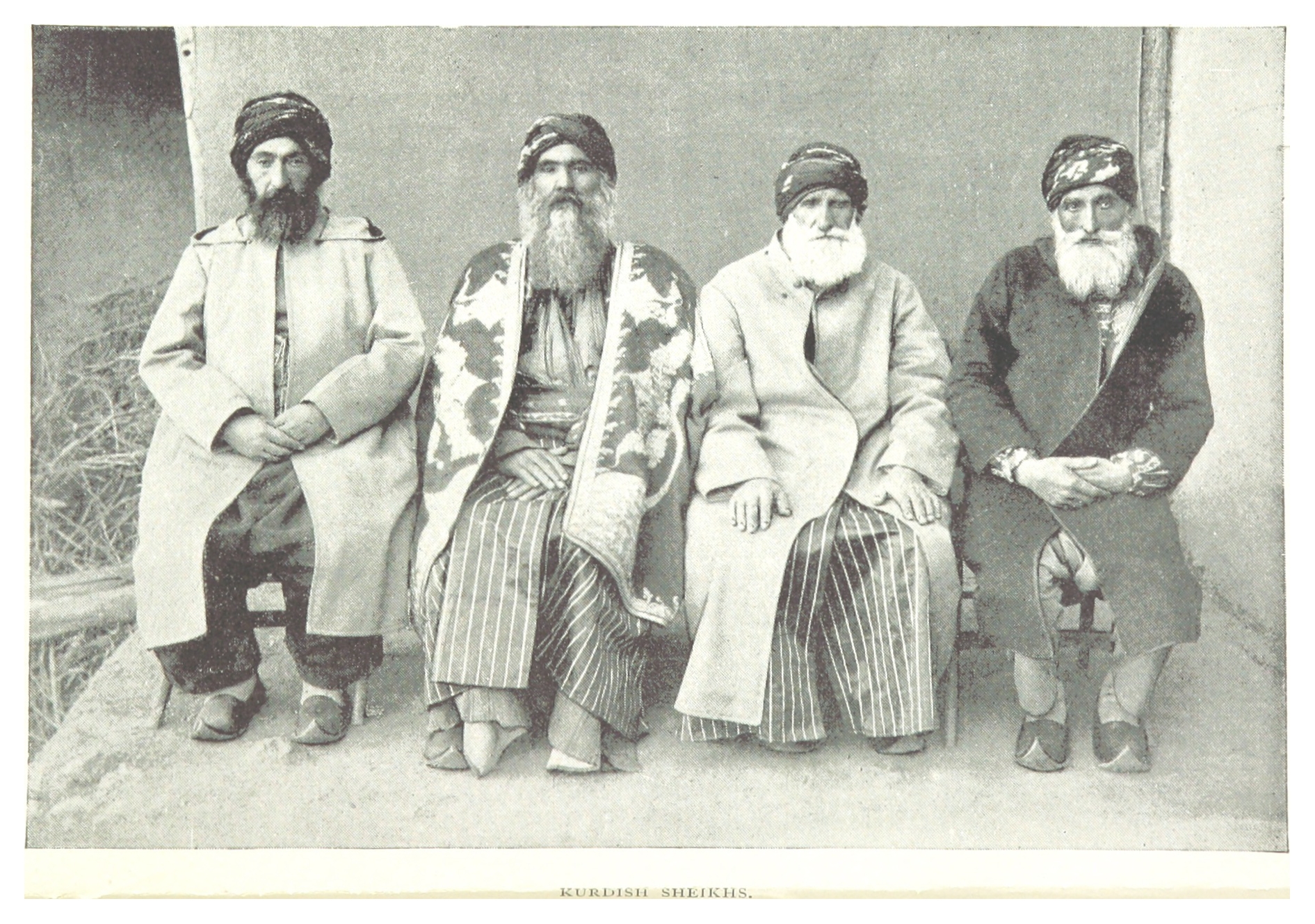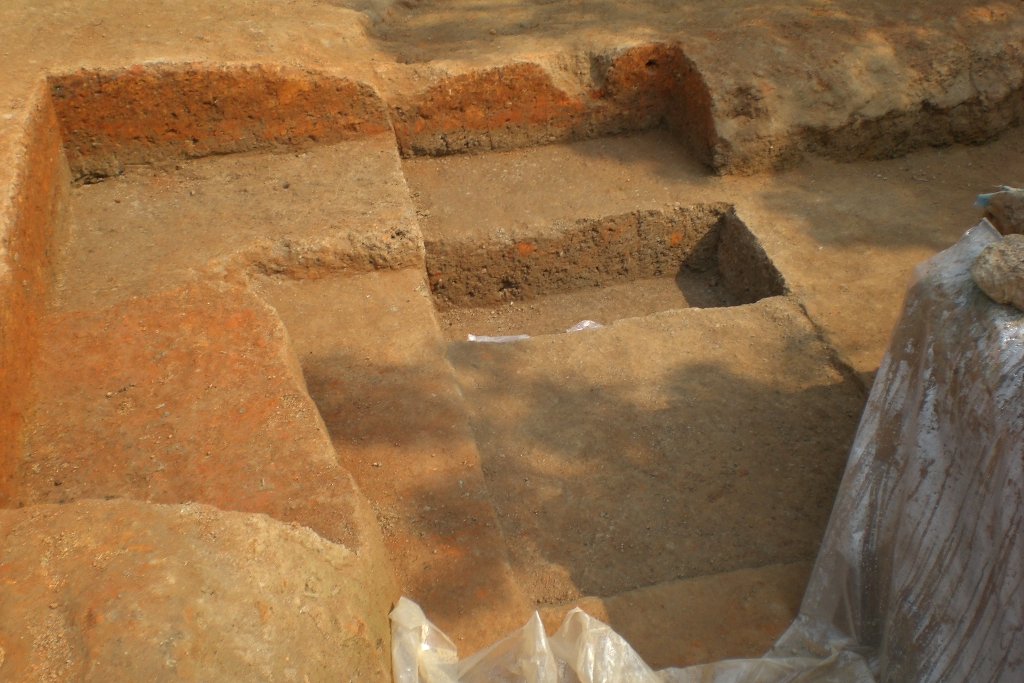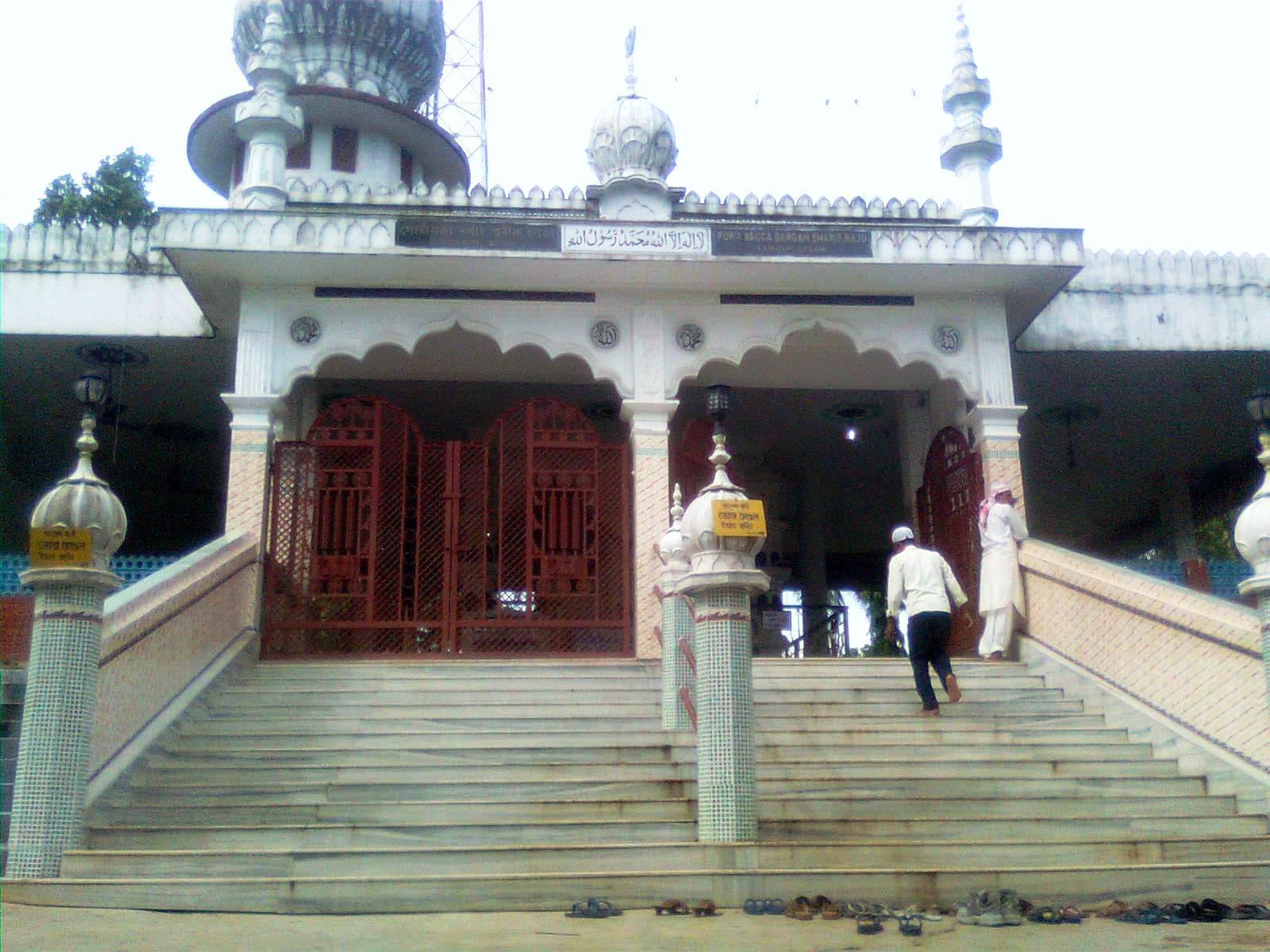|
Sulayman Banarsi
Shaykh Sulaymān Banārsī ( bn, শেখ সুলেমান বানারসী, fa, ) was a Mughal Empire official during the reign of emperor Jahangir. He served as the co-sardar of Sarkar Sylhet from 1617 until his death in 1620. Background Not much is known regarding Sulayman's background. He was a Shaykh and was said to have spent a lot of his earlier life in the landlocked city of Banaras in North India. Life The Subahdar of Bengal Subah, Qasim Khan Chishti, removed Mukarram Khan from his post as the Sardar of Sylhet out of dissatisfaction. The Subahdar replaced Mukarram with Mirak Bahadur Jalair, as Sylhet's chief sardar and Shaykh Sulayman Banarsi to govern Uhar and Taraf. Many junior mansabdars had jagirs in the Sarkar of Sylhet and so Qasim commanded them to assist Sulayman with his post in Sylhet. Sulayman had a son called Tufan Bahadur, who was also a notable noble. Tufan accompanied Abdun Nabi on the expedition to Katghar. Death Sulayman died in 1620. ... [...More Info...] [...Related Items...] OR: [Wikipedia] [Google] [Baidu] |
Shaykh
Sheikh (pronounced or ; ar, شيخ ' , mostly pronounced , plural ' )—also transliterated sheekh, sheyikh, shaykh, shayk, shekh, shaik and Shaikh, shak—is an honorific title in the Arabic language. It commonly designates a chief of a tribe or a royal family member in Arabian countries, in some countries it is also given to those of great knowledge in religious affairs as a surname by a prestige religious leader from a chain of Sufi scholars. It is also commonly used to refer to a Muslim religious scholar. It is also used as an honorary title by people claiming to be descended from Hasan ibn Ali and Husayn ibn Ali both patrilineal and matrilineal who are grandsons of the Islamic prophet Muhammad. The term is literally translated to "Elder" (is also translated to " Lord/ Master" in a monarchical context). The word 'sheikh' is mentioned in the 23rd verse of Surah Al-Qasas in the Quran. Etymology and meaning The word in Arabic stems from a triliteral root connected ... [...More Info...] [...Related Items...] OR: [Wikipedia] [Google] [Baidu] |
South Sylhet
Moulvibazar ( bn, মৌলভীবাজার) also spelled Maulvibazar, Moulavibazar, and Maulavibazar, (former South Sylhet) is the southeastern district of Sylhet Division in northeastern Bangladesh, named after the town of Moulvibazar. It is bordered by the Indian states of Tripura and Assam to the south and east, respectively; and by the Bangladeshi districts of Habiganj to the west and Sylhet to the north. Etymology The name of the district, Moulvibazar is named after its headquarter, Moulvibazar. The word is derived from two words, moulvi and bazar, meaning 'Market of the Moulvi'. 'Moulvi' is an Islamic honorific title and 'bazar' is the Bengali word for market or township. Moulvibazar is named after Moulvi Syed Qudratullah, a local judge and a descendant of Shah Mustafa, an Islamic preacher active during the advent of Islam in the region. It is believed that the name was coined in the 1771 when Syed Qudratullah established a small bazaar on his zamindari land and loca ... [...More Info...] [...Related Items...] OR: [Wikipedia] [Google] [Baidu] |
Year Of Birth Unknown
A year or annus is the orbital period of a planetary body, for example, the Earth, moving in its orbit around the Sun. Due to the Earth's axial tilt, the course of a year sees the passing of the seasons, marked by change in weather, the hours of daylight, and, consequently, vegetation and soil fertility. In temperate and subpolar regions around the planet, four seasons are generally recognized: spring, summer, autumn and winter. In tropical and subtropical regions, several geographical sectors do not present defined seasons; but in the seasonal tropics, the annual wet and dry seasons are recognized and tracked. A calendar year is an approximation of the number of days of the Earth's orbital period, as counted in a given calendar. The Gregorian calendar, or modern calendar, presents its calendar year to be either a common year of 365 days or a leap year of 366 days, as do the Julian calendars. For the Gregorian calendar, the average length of the calendar year ... [...More Info...] [...Related Items...] OR: [Wikipedia] [Google] [Baidu] |
Rulers Of Sylhet
A ruler, sometimes called a rule, line gauge, or scale, is a device used in geometry and technical drawing, as well as the engineering and construction industries, to measure distances or draw straight lines. Variants Rulers have long been made from different materials and in multiple sizes. Some are wooden. Plastics have also been used since they were invented; they can be molded with length markings instead of being scribed. Metal is used for more durable rulers for use in the workshop; sometimes a metal edge is embedded into a wooden desk ruler to preserve the edge when used for straight-line cutting. in length is useful for a ruler to be kept on a desk to help in drawing. Shorter rulers are convenient for keeping in a pocket. Longer rulers, e.g., , are necessary in some cases. Rigid wooden or plastic yardsticks, 1 yard long, and meter sticks, 1 meter long, are also used. Classically, long measuring rods were used for larger projects, now superseded by tap ... [...More Info...] [...Related Items...] OR: [Wikipedia] [Google] [Baidu] |
Mughal Nobility
{{disambiguation ...
Mughal or Moghul may refer to: Related to the Mughal Empire * Mughal Empire of South Asia between the 16th and 19th centuries * Mughal dynasty * Mughal emperors * Mughal people, a social group of Central and South Asia * Mughal architecture * Mughlai cuisine * Mughal painting Other uses * Moghulistan in Central Asia ** Moghol people * Moghul, Iran, a village * Mirza Mughal (1817–1857), a Mughal prince * Fiyaz Mughal, founder of Tell MAMA See also * Mogul (other) * Mughal-e-Azam (other) ''Mughal-e-Azam'' is a 1960 Indian epic historical drama film. It may also refer to: * ''Mughal-e-Azam'' (soundtrack), soundtrack to the film by Naushad * ''Mughal-e-Azam'' (musical), a Broadway-style musical based on the 1960 film * ''Maan Gaye M ... [...More Info...] [...Related Items...] OR: [Wikipedia] [Google] [Baidu] |
History Of Rulers Of Bengal
This is a list of rulers of Bengal. For much of its history, Bengal was split up into several independent kingdoms, completely unifying only several times. In ancient times, Bengal consisted of the kingdoms of Pundra, Suhma, Vanga, Samatata and Harikela. In the 4th century BCE, during the reign of the Nanda Empire, the powerful rulers of Gangaridai sent their forces with the war elephants which led the withdrawal of Alexander the Great from the Indian subcontinent. As a province of the Mauryan Empire, much of Bengal was part of it except for the far eastern Bengali kingdoms which maintained friendly relationships with Ashoka. The kingdoms of Bengal continued to exist as tributary states before succumbing to the Guptas. With the fall of the Gupta Empire, Bengal was united under a single local ruler, King Shashanka, for the first time. With the collapse of his kingdom, Bengal split up into petty kingdoms once more. With the rise of Gopala in 750 AD, Bengal was united once mor ... [...More Info...] [...Related Items...] OR: [Wikipedia] [Google] [Baidu] |
History Of Bangladesh
Civilisational history of Bangladesh previously known as East Bengal, dates back over four millennia, to the Chalcolithic. The country's early documented history featured successions of Hindu and Buddhist kingdoms and empires, vying for regional dominance. Islam arrived during the 6th-7th century AD and became dominant gradually since the early 13th century with the conquests led by Bakhtiyar Khalji as well as activities of Sunni missionaries such as Shah Jalal in the region. Later, Muslim rulers initiated the preaching of Islam by building mosques. From the 14th century onward, it was ruled by the Bengal Sultanate, founded by king Shamsuddin Ilyas Shah, beginning a period of the country's economic prosperity and military dominance over the regional empires, which was referred by the Europeans as the richest country to trade with. Afterwards, the region came under the Mughal Empire, as its wealthiest province. Bengal Subah generated almost half of the empire's GDP a ... [...More Info...] [...Related Items...] OR: [Wikipedia] [Google] [Baidu] |
History Of Bengal
The history of Bengal is intertwined with the history of the broader Indian subcontinent and the surrounding regions of South Asia and Southeast Asia. It includes modern-day Bangladesh and the Indian states of West Bengal and Assam's Karimganj district, located in the eastern part of the Indian subcontinent, at the apex of the Bay of Bengal and dominated by the fertile Ganges delta. The region was known to the ancient Greeks and Romans as '' Gangaridai'', a powerful kingdom whose war elephant forces led the withdrawal of Alexander the Great from India. Some historians have identified Gangaridai with other parts of India. The Ganges and the Brahmaputra rivers act as a geographic marker of the region, but also connects the region to the broader Indian subcontinent. Bengal, at times, has played an important role in the history of the Indian subcontinent. The area's early history featured a succession of Indian empires, internal squabbling, and a tussle between Hinduism a ... [...More Info...] [...Related Items...] OR: [Wikipedia] [Google] [Baidu] |
Sabi Khan
Ṣabīḥ Khān ( fa, صبيح خان), popularly known as Sabi Khan ( bn, ছবি খাঁ), was a Mughal statesman best known for serving as the Kotwal and Faujdar of Bakla (Barisal) during the reign of Mughal emperor Jahangir. He was renowned for the construction of numerous roads, bridges, reservoirs and places of worship in the Barisal region. Henry Beveridge credits him as the first road-builder of the region. The Kotalipara Upazila is named after him. Early life and appointmentship Sabi Khan was said to have arrived to the region during the reign of Mughal emperor Jahangir as a representative of the Subahdar (Governor) of Bengal. A minority of researchers opine that he was a contemporary of Sultan Daud Khan Karrani. The Mughal governor, based in Jahangir Nagar ( Old Dhaka), appointed Sabi Khan as the Faujdar of Bakla in 1618. He settled with his army in the village of Gaila-Fullasri in present-day Agailjhara. It is said that Gaila got its name from ''Golabarud'' ... [...More Info...] [...Related Items...] OR: [Wikipedia] [Google] [Baidu] |
Jahangirnagar
Old Dhaka ( bn, পুরান ঢাকা, Puran Dhaka) is a term used to refer to the historic old city of Dhaka, the capital of Bangladesh. It was founded in 1608 as Jahangirabad or Jahangirnagar ( bn, জাহাঙ্গীরনগর, Jahangirnogor, City of Jahangir), the capital of Mughal Province of Bengal and named after the Mughal emperor Jahangir. It is located on the banks of the Buriganga River. It was one of the largest and most prosperous cities of South Asia and the center of the worldwide muslin trade. The then Nawab of Bengal Murshid Quli Khan shifted the capital from Dhaka to Murshidabad in the early-18th century. With the rise of Calcutta (now Kolkata) during the British rule, Dhaka began to decline and came to be known as the "City of Magnificent Ruins". The British however began to develop the modern city from the mid-19th century. Old Dhaka is famous for its variety of foods and amicable living of people of all religions in harmony. The main Musli ... [...More Info...] [...Related Items...] OR: [Wikipedia] [Google] [Baidu] |
Hajo
Hajo is a historic town set in the hills northwest of Guwahati, Assam, India. It is a meeting point of Buddhists, Hindus and Muslims due to the various pilgrimage sites on the different hills of Hajo. To the Hindus, the Manikut Parbat of Hajo is the site of the 10th-century temple ruins and the 11th- to 16th-century temples complex for Vaishnavism as well as shrines of Shaivism and Shaktism. To the Buddhists, particularly from Bhutan and Tibet, Assam is where the Buddha died and the Hayagriva temple in Hajo is a part of the sacred geography of the Buddha. To the regional Muslims, the Mughal era Poa-Mecca shrine on another hill of Hajo has the tomb of Giyasuddin Aulia built in the 17th-century.Bhuvan Vikrama (2017), ''Hajo'', Office of Superintending Archaeologist, Archaeological Survey of India – Guwahati Circle, Guwahati, India Hajo is one of the important historical and archaeological sites in northeast India as it preserves the history, inscriptions and architecture in a r ... [...More Info...] [...Related Items...] OR: [Wikipedia] [Google] [Baidu] |
Sardar
Sardar, also spelled as Sardaar/Sirdar ( fa, سردار, , 'commander', literally 'headmaster'), is a title of royalty and nobility that was originally used to denote princes, noblemen, chiefs, kings and other aristocrats. It has also been used to denote a chief or leader of a tribe or group. It is used as a Persian synonym of the title ''Emir'' of Arabic origin. In modern history it is known as the title for Afghan Princes during the Afghan Royal Kingdom, descending from the Emir Sultan Mohammed Khan Telai. It was also used as a title of merit in the ''Nishan-i-Sardari'' for outstanding service in statecraft. The term and its cognates originate from Persian ''sardār'' () and have been historically used across Persia (Iran), the Ottoman Empire and Turkey (as "Serdar"), Mesopotamia (now Iraq), Syria], South Asia (Pakistan, India, Bangladesh and Nepal), the Caucasus, Central Asia, the Balkans and Egypt (as "Sirdar"). The term ''sardar'' was used by Sikh leaders and general ... [...More Info...] [...Related Items...] OR: [Wikipedia] [Google] [Baidu] |



.png)




